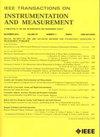红外弹道计时码表的设计、制造和校准
IF 5.6
2区 工程技术
Q1 ENGINEERING, ELECTRICAL & ELECTRONIC
IEEE Transactions on Instrumentation and Measurement
Pub Date : 2024-11-11
DOI:10.1109/TIM.2024.3493894
引用次数: 0
摘要
计时器是一种测量两个事件之间时间的装置。本文讨论弹道计时器的设计、制造和校准,该计时器用于测量弹丸沿直线在两个检查点 A 和 B 之间移动固定距离所需的时间。A 和 B 处的红外线发射器-接收器对和 Arduino 微控制器电路确认弹丸已越过这两个检查点。这一事件的持续时间被精确地记录在微控制器的存储器中。该系统设计用于测量长度为 50 毫米的弹丸的速度,最高可达 3500 米/秒。计时器的时间不确定性为 0.71 美元~\mu $ s。检查点之间的距离是用安装在数控系统上的探头测量的,不确定性为 0.10 毫米。这种本地计时器的总成本比市场上出售的计时器低 4-33 倍。该装置的新颖之处在于它的校准,校准是通过另一个 Arduino 电路来完成的,该电路通过编程来控制红外 LED 的闪烁。通过电子控制红外光源,发送指定宽度、间隔指定时间的两个红外脉冲,并由红外传感器检测和测量。这种光电校准方法无需进行现场校准,从而简化了校准过程。本文章由计算机程序翻译,如有差异,请以英文原文为准。
Design, Fabrication, and Calibration of an IR-Based Ballistic Chronograph
A chronograph is a device that measures the time between two events. This article discusses the design, fabrication, and calibration of a ballistic chronograph designed to measure the time taken by a projectile to travel a fixed distance between two checkpoints, A and B, along a straight line. The infrared transmitter-receiver pairs at A and B and an Arduino microcontroller circuit confirm that the projectile has crossed these checkpoints. The duration of this event is precisely recorded in the microcontroller’s memory. The system was designed to measure speeds up to 3500 m/s for a projectile 50 mm in length. The time uncertainty of the chronograph was found to be
$0.71~\mu $
s. Distance between the checkpoints was measured with a CNC-mounted probe with an uncertainty of 0.10 mm. The overall cost of this local chronograph is 4–33 times lower than the commercially available chronographs. The novelty of the device lies in its calibration, which was performed using another Arduino circuit programmed to control the blinking of the IR LEDs. Two IR pulses of specified widths separated by a specified time interval were sent by electronically controlling the IR sources and detected and measured by the IR sensors. This optoelectronic method of calibration eliminated the need for field calibration, simplifying the process.
求助全文
通过发布文献求助,成功后即可免费获取论文全文。
去求助
来源期刊

IEEE Transactions on Instrumentation and Measurement
工程技术-工程:电子与电气
CiteScore
9.00
自引率
23.20%
发文量
1294
审稿时长
3.9 months
期刊介绍:
Papers are sought that address innovative solutions to the development and use of electrical and electronic instruments and equipment to measure, monitor and/or record physical phenomena for the purpose of advancing measurement science, methods, functionality and applications. The scope of these papers may encompass: (1) theory, methodology, and practice of measurement; (2) design, development and evaluation of instrumentation and measurement systems and components used in generating, acquiring, conditioning and processing signals; (3) analysis, representation, display, and preservation of the information obtained from a set of measurements; and (4) scientific and technical support to establishment and maintenance of technical standards in the field of Instrumentation and Measurement.
 求助内容:
求助内容: 应助结果提醒方式:
应助结果提醒方式:


